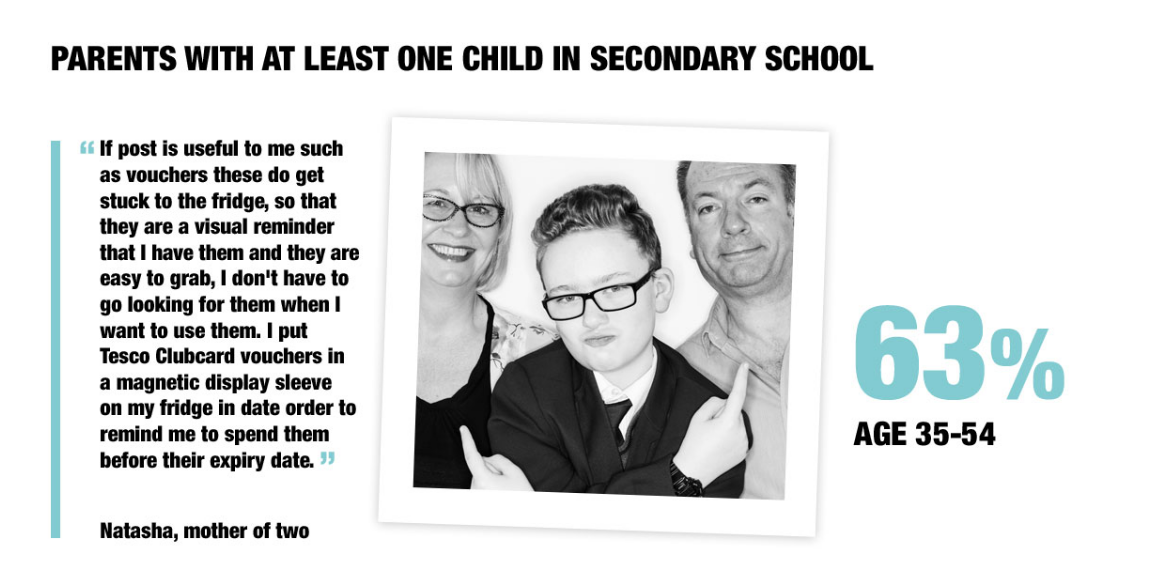The 7 Life Stages of Mail: Old Families

Communal, collaborative and comfortable together. This group of people are 52% more likely to have used a voucher received in the mail in the last year! These people enjoy value-driven content with vouchers or loyalty scheme messages.
Mail to Older Families both drives engagement and response. It may be seen, noticed and discussed by all family members of the household. Mail that is ‘family-inclusive’ is likely to get a better response.
Older families are comfortable with mail – and it’s a communal experience
- – Older Families receive significant amounts of mail – including, for example, high-street retailers, supermarkets, credit card companies and restaurants.
- – They understand it, engage with it, discuss it and share it. This may be with their partner.
“My wife deals with all of the finance – well, she’s a book-keeper. But she leaves very early and I often work at home. So I tend to work out what needs action and it all goes here on her laptop. She’ll deal with everything usually at least once a week – all of that’s done online where we can.”
…or they may engage with it with their children.
“I tend to have a flick through [the Go Outdoors catalogue], but it’s more about the lads. It’s handy to have something like this, you can have a flick through to see what’s there and then we’ll go online before going in [store].”
Relevant mail is displayed – the brand lives in the home Older Families tend to take an organised, structured approach to their mail, and display for accessibility and reminder purposes.
Value is a powerful message
A quarter say they are struggling to cope on present income. Older children may have more expensive activities, cost more to take on holiday, and incur secondary or tertiary education funding.
Digital communication is central to their lives – including how they respond to mail
Of those who responded to direct mail, 30.4% did so online via a PC or laptop (29% more likely than the sample average); and 10% responded via smartphone or tablet (also 29% more likely than the sample average).
IT worker Paul receives four to six mail items a day. Actions from the mail included booking a family holiday, planning Christmas shopping via a catalogue and ordering a takeaway.
“I work in IT so am used to looking everything up online. To be honest, I am glad to have something in my hand. I often take stuff to work to look at on the train.”
Source: The Life Stages of Mail, 2016
